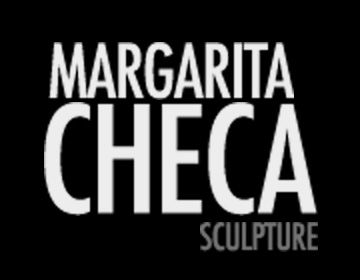Touching wood
It used to be more common to speak of male sculptors than of female sculptors. However, in recent decades this reality has been reversed: women are carrying the torch in the duty of making art with stone, marble, metal and wood. Margarita Checa is one of them.
Trained at the Catholic University, the artist had her first individual exposition in 1977 in the Camino Brent gallery. Before, in 1972 and 1975, she had also participated in collective expositions.
“I always did things with my hands – handicrafts, drawings, paintings. While attending university I got the necessary impulse and I later learned to draw with Cristina Galvez. She and Ana Maccagno were the great masters among many artists,” remembers Margarita.
Even though her real works are of wood, she began with bronze, but her need to grow as an artist called out. Finally, she discovered that wood provided her with what she was looking for.
Olive, mahogany and cedar are some of the many types of wood that she works with, although she prefers olive. “My brother Manuel gave me two olive trees that had been cut. From then on l’ve been working with olive wood,” she remembers.
With wood as her medium, Margarita dazzled friends and strangers with her sculpted bodies larger than our own. Svelte feminine bodies and elastic animals formed part of a fantastic universe, with which the sculptor distanced herself from the abstract style of her colleagues.
Beginning in the 1990’s she traveled to Costa Rica. After living in the tropics surrounded by Central American forests, her work became more detailed. Folds and brocades enriched the surface where incisions presented her with the possibility of covering her wood with different tones and applications of leather and metal.
Upon returning to Perú in 1996, she moved near her family in lea. From then on she returned to the Peruvian palestra and made individual and collective presentations not only in Lima, but also abroad. In both, a refined
Transformation was noted.
This talent has allowed successful expositions ¡n the United States, at the Unveiling of Gea de Knoxville and in the Lowe Gallery in Atlanta. Our sculptor has tightened her bond with the United States since 1997, when a couple of important collectors entrusted her to make a large bronze seulpture to be installed in a statue garden in Knoxville.
Like all productive processes, the work of an artist changes. “My work has changed a lot, but also my life. My work is a self portrait of my life. As far as motivation goes, one keeps the essence. The outside stimulates a per-son to find what they are looking for in themselves. My search is internal,” she adds.
According to her criteria, when a person begins their search for their horizons, they must do ¡t honestly. “I have read a lot of Joseph Campbell and ¡t surprised me because the names I gave my pieces I later found in his writings. It was like living an archetype, one thing doesn’t go without the other, and encounters strengthen or reject our search, that is why we have to be honest with ourselves,” she says.
We asked her about the extent to which art, in a country like ours, can help human and social development. “A one moment, when there was so much violence in Perú, doubted my profession. But found something important during such destruction, the act of making art in such an environment was absolutely dry and desolate, but at the same time basic, because that ‘ is how one counteracted the negative. It was an answer to the destruction,” she con fesses.
Back